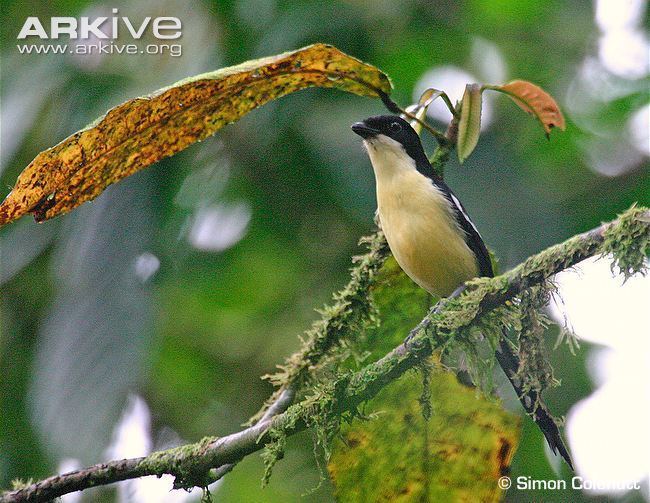Order Passeriformes Higher classification Lanius | Phylum Chordata Family Laniidae Scientific name Lanius newtoni Rank Species | |
 | ||
Similar Bird, Mackinnon's shrike, Somali fiscal, Mountain shrike, Lanius | ||
The São Tomé fiscal or Newton's fiscal (Lanius newtoni) is a species of bird in the family Laniidae. It is endemic to São Tomé and Príncipe only on São Tomé Island, its main dominance are within higher elevations and Obo Natural Park. It is 20 to 21 centimeters long. The bird is black above with a white shoulder-scapular bar.[1] The São Tomé fiscal has a yellow chin, breast, belly, flanks vent and under tail.[2] Its graduated tail has all black central tail feathers and an increasing amount of white on outer web from inner to outer tail feathers.[3] The Lanius newtoni has a clear voice with a whistle tiuh tiuh often repeated and metallic tsink tsink audible over a long distance.[1]
The species lives on the island of São Tomé and is usually found under closed canopy. Its natural habitats are subtropical or tropical moist lowland forests and subtropical or tropical moist montane forests.[1]
Status
The São Tomé fiscal is a very rare bird. There were records of sightings in 1888 and again in 1928 by José G. Correia based on thirteen examples. Another individual was sighted in 1990 near the source of the Rio Xufexufe, and a number of birds have been spotted since then. All sightings have been in primary forest with rocky areas but little undergrowth, sometimes on low ridges or beside watercourses, and always below 1,400 m (4,600 ft). The bird are also founded in the Rio Ió Grande valley in the middle of the island just south of Pequeno in the area of Bombaim. In 2007, there were proof that they are founded in Ribeira Peixe and Ana Chaves, based on a few observations that they were 50 examples. This type of habitat is decreasing as forests are cut to create coffee and cocoa plantations, and the building of new power plants are another possible threat.
Due to habitat loss, it now lives in a government-protected forest to help its endangerment problem.[4] It is one of the 168 species considered to be a critically endangered bird by the International Union for Conservation of Nature, which means it has a fifty percent chance of becoming extinct within the next five years.[5] In 2008 it made the Rare Birds yearbook.[6]
